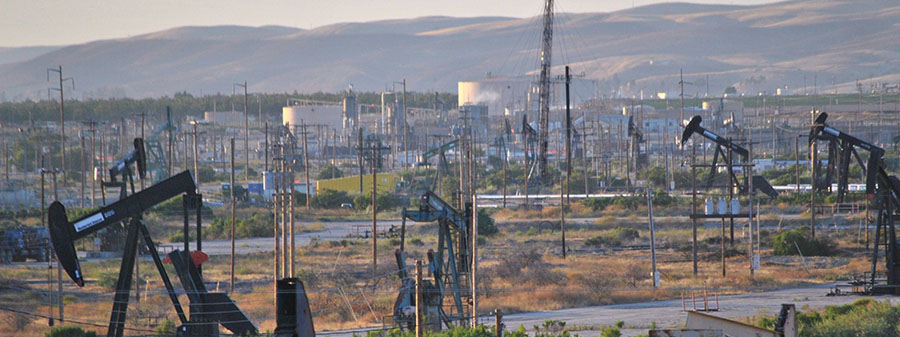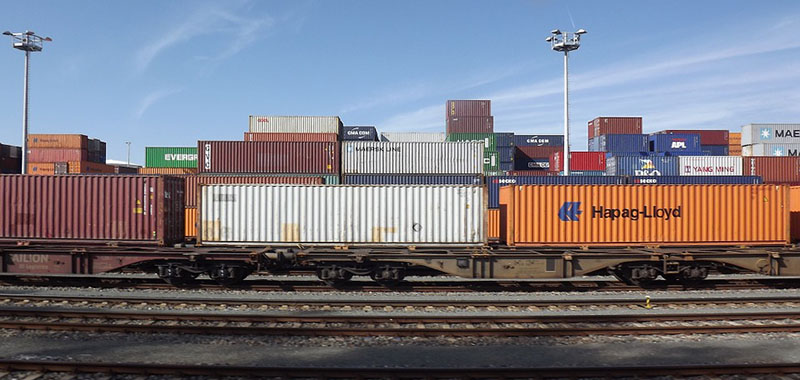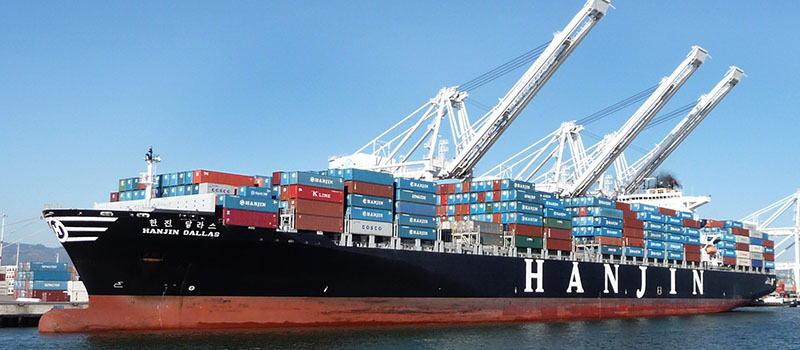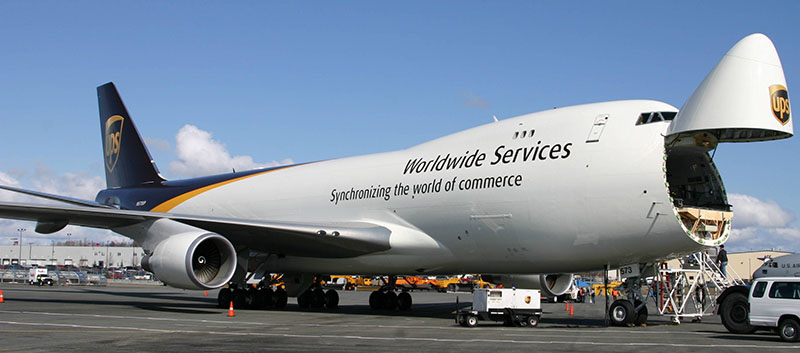2017 Rate Outlook: Will the pieces fall into place?
Trade and transport analysts see a turnaround in last year’s negative market outlook, but as global GDP continues to gradually strengthen, carriers in all modes will be challenged to manage capacity while maintaining service levels. Furthermore, sudden shifts in trade policies and agreements may also have an impact on rates.

Today’s logistics managers should not be surprised that IHS Markit’s annual “Economic Predictions” was shaped largely by major global political changes in the second half of 2016. The same holds true for our transportation analysts.
Up until the recent U.S. presidential election, most global economists believed that Brexit would be the major “game changer,” but then came along Donald Trump—the surprise populist winner who pledged to invest in domestic transport infrastructure while renegotiating pending international trade agreements.
In the December edition of the Quarterly Global Macroeconomic Outlook, IHS Markit chief economist Nariman Behravesh observes that President Trump’s ascendency may present the potential to upset the established world order and alter any predictions made at this date.
“Much will depend on whether the incoming Trump administration follows through with its campaign promises or takes a more pragmatic approach and focuses on growth,” says Behravesh.
Real global GDP growth is projected to increase 2.8% in 2016, maintains Behravesh. This is better than 2015, but it will mark a sixth consecutive year below 3.0%. Meanwhile, U.S. expansion will become more balanced in the year ahead, as capital spending recovers and an inventory drawdown ends.
“Moreover, President-elect Trump’s fiscal stimulus plan will probably boost growth in the near term,” says Behravesh. “Europe’s growth is likely to suffer next year because of political uncertainly around elections in France, Germany and the Netherlands.”
At the same time, UK growth will also slow as prolonged uncertainty under Brexit leads to a scaling back of investment and employment plans. The Asia-Pacific region, predicts Behravesh, will make the strongest contribution to global economic growth, but plunging exchange rates could increase financial pressure on many key economies.
“Risks abound, including financial-market turbulence, China’s rising debt and excess capacity, conflicts in the Middle East and Africa, Eurozone banking problems, and stagnation in developed countries,” he concludes.
Transportation and logistics analysts are telling shippers to expect less rate volatility next year, but a steady incremental rise in rates across the board.
Energy questions abound
No discussion of modal rates would be complete without examining energy expenses, says Derik Andreoli, Ph.D.c., senior analyst at Mercator International our Oil and Fuel columnist at Logistics Management.
“Despite OPEC’s recent agreement to cut production by 1.2 million barrels per day, it’s unlikely that oil prices will rise to any significant degree over the first half of 2017 for several reasons,” says Andreoli.

First and foremost, Andreoli contends that a gulf exists between OPEC’s statements and the actions of the cartel’s members. While OPEC members have agreed to reduce output, not a single member has turned down the taps. The biggest challenge in this regard is that the plan only works if all members cooperate, and history has demonstrated that the likelihood of this happening is remote.
“Given the group dynamics, and Saudi Arabia’s insistence that they’re not willing to lose market share in order to prop up prices for other exporting countries, we will probably witness an all-or-nothing event,” says Andreoli.
For the sake of argument, logistics managers may assume that OPEC cuts the agreed volume of 1.2 million barrels per day from production. If this happens, they will see the global supply overhang eliminated.
According to OPEC, over the first three quarters of 2016, global production exceeded consumption by 1.1 million barrels per day. Consequently, a cut of 1.2 million barrels per day will lead to a situation in which the considerable stock overhang will be depleted, but only very slowly, holding all else equal.
“Of course, all else is not equal,” observes Andreoli. “The problem that the OPEC plan faces is that U.S. shale oil producers have demonstrated a willingness to drill wells and produce oil at prices in the $50 to $60 range, and this threshold has been declining as producers have become ever more efficient at extracting higher volumes of oil per well.”
Trucking: Out of the “trough”
With energy expenses on an even plane, the main issue for the motor carrier industry will be in managing capacity.
According to Stifel Nicolaus trucking analyst John Larkin, many carriers stood firm late in the year suggesting that they would rather park trucks than haul freight at non-compensatory rates, indicating that the sector might be near the “pricing trough.” Now, he believes carriers were thrilled to see 2016 come to a close.

“Truckload carriers grappled with persistently weak spot market pricing and contract customers who abandoned talk of collaboration and reverted to aggressive, Neanderthal style pricing tactics,” says Larkin. “Weak consumer demand, bloated inventories, sluggish industrial activity, and the strong U.S. dollar all contributed to a soft freight market. Carriers endeavored to tighten supply and demand and protect equipment utilization by downsizing their fleets.”
So, after a challenging 2016, carriers are hopeful that the combination of accelerating economic growth, ongoing fleet downsizing, and the Federal Motor Carrier Safety Administration’s electronic logging device mandate will tighten supply and demand across the industry enough to begin the process of restoring rates to fully compensatory levels.
“We might well see evidence of the tight supply/demand dynamic flexing its muscles as early as the second quarter volume peak,” says Larkin. “Truckload carriers will approach shippers asking for price increases. They will suggest that, absent price increases, capacity might well be disproportionately allocated to customers that have already provided relief with the much-needed rate hikes.”
Because less-then-truckload pricing never turned negative year-over-year in 2016, that sector needs to cover less ground than truckload to achieve fully compensatory pricing. However, Larkin expects less-than-truckload pricing increases to accelerate from say 2% in 2016 to 3%-4% in 2017.
Rail/Intermodal: Realignment reality
Meanwhile, railroads are currently seeking to realign their service networks to favor truck-competitive intermodal and merchandise services. But due to the nature of the industry, rail analysts say that they will be several years in the effort.
In 2016, this strategy had not shown big results in the face of low energy prices, maintains Frank Harder, a principal with the transport consultancy, Tioga Group. “Thanks to serious price discipline and cost cutting, railroads have been operating profitably in the face of reduced volumes in a manner that has not previously been experienced in the industry,” he says.

Harder’s expectation for 2017 is marginally reduced international trade-related rail demand as the Trump administration substitutes bilateral trade agreements for multilateral deals. This may have significant impact in both intermodal and agricultural businesses.
“The railroads will continue to pursue truck competitive business, short-haul intermodal and carload,” Harder adds. “The decline in coal volume appears to be slowing and increasing oil prices may create a second surge in the oil train business.”
Harder’s forecast is that rail prices will, at best, see a 1% to 2% increase barring any unforeseen macro-economic pressures.
Ocean: Rates set to surge
Whereas most modes should see a slight uptick in rates in 2017, analysts say that a major “correction” is long overdue for ocean cargo carriers. Philip Damas, director of London-based Drewry Supply Chain Advisors contends that container freight rates on the major lanes will go up by more than 10% next year after having declined to all-time lows in 2016.
“Spot freight rates, as leading indicators of fixed annual contract rates, have already increased by about 40% on major lanes from Asia in the past 12 months,” says Damas. “In fact, ocean carriers stopped quoting very low, non-compensatory rates. The bankruptcy of Hanjin in August also had a sudden effect on spot rates.”

According to Damas, 2017 will be the first year of increasing contract rates since 2010 and could come as a shock to logistics managers who’ve gotten used to deflationary international transportation costs year after year.
“Some of our shippers are concerned that the rapid consolidation of the ocean carrier industry—which has moved from the top 20 global carriers to a smaller group of top 13 carriers—will substantially change the bargaining power of carriers,” says Damas. “It will become essential for shippers to use the latest e-sourcing procurement tools and benchmarking tools to mitigate increasing ocean transportation costs in 2017 and potentially beyond.”
With spot rates from Asia to the U.S. West Coast much higher than spot rates this time last year, and at least double the previous annual contract rates, Damas believes that the next rate correction has to be upwards.
“We have advised our customers to budget for rate increases and also to take measures to protect themselves against the risk of failure or disruptions from other financially weak carriers,” adds Damas.
Air: Ending on a high note
Chuck Clowdis, managing director of transportation advisory services for IHS Global Insight, notes that air cargo activity at the end of last year exceeded all expectations—but not without raising some serious questions. “We really don’t know if we should expect to see a continuation of this growth in 2017, or if rates will accelerate despite capacity and fuel economy advances,” says Clowdis.
Another question to consider is the promised investment in domestic airport improvement funding. With better infrastructure, adds Clowdis, service carriers may be more comfortable with their rate demands. “And there’s also been talk of certain goods shifting manufacturing and assembly to the U.S. from overseas,” says Clowdis. “Will this have a positive or negative impact on air cargo rates and volumes? It’s too hard to predict at this stage.”

Analysts at the International Air Transport Association (IATA) are not being as cautious in their outlook, predicting that the global airline industry will make a net profit in 2017 of $29.8 billion when cargo numbers are factored in.
On forecast of total revenues of $736 billion, that represents a 4.1% net profit margin. This will be the third consecutive year—and the third year in the industry’s history—in which airlines will make a return on invested capital (7.9%), which is above the weighted average cost of capital (6.9%).
IATA revised slightly downward its outlook for 2016 airline industry profitability to $35.6 billion (from the June projection of $39.4 billion) owing to slower global GDP growth and rising costs. This will still be the highest absolute profit generated by the airline industry and the highest net profit margin (5.1%).
“Airlines continue to deliver strong results,” says Alexandre de Juniac, IATA’s Director General and CEO. “This year we expect a record net profit of $35.6 billion, largely due to new cargo orders. Even though conditions in 2017 will be more difficult with rising oil prices, we see the industry earning $29.8 billion.”
Parcel: “Buyer beware”
North American parcel carriers distinguished themselves in 2016 by making more money, too, says Jerry Hempstead, president of parcel express analyst firm Hempstead Consulting.
“Distancing itself from tradition, UPS led the pack in 2016 by announcing their general rate increase for all services, but later revised the announcement when they found out what FedEx was up to,” says Hempstead. “Historically, FedEx always acted first with the announcement of the general increase for air services and then would wait until UPS announced the ground base rates for the coming year.”
Last year, FedEx surprised the shipping community by announcing both air and ground rates in September. Fedex didn’t wait for UPS to dictate the magnitude of the increase in ground base rates, and FedEx fired a salvo that they would be making the pricing rules.
According to analysts, shippers this year will see that UPS base rates are generally higher than those published by FedEx for the first time in recent memory. Furthermore, there will be “adjustments” coming in the New Year for shippers. The most notable of these was the change in the rubric of the determination of dimensional (or cubic) weight.
The current rule is to take the length and multiply by the width and then multiply by the height (in inches) and then divide that result by a factor of 166 for domestic transactions. FedEx has decided the new divisor on January 2 will be 139.
“Nothing prevents them from doing this, but some wise shippers have negotiated custom divisors that will protect them for a time,” says Hempstead. “This announcement was not a surprise, but the change will first result in a higher weight determination on transactions already ‘dimmed’ and, more importantly, it will increase the billed weight on many transactions that are not currently charged for dimensional weight.”
Another change announced has to do with the application of the additional handling charge. UPS says that effective this month, the additional handling charge will be assessed for any package with the longest side exceeding 48 inches, instead of 60 inches. There was already a hefty fee (which is increasing) for additional handling.
Contributing to complexity, the method of determining the fuel surcharge is changing. Effective Feb. 6, 2017, the fuel surcharge percentage for FedEx Express and FedEx Ground shipment will be subject to weekly adjustment. UPS quickly updated their website with a “me too” statement with the same effective date.
One surprise was that FedEx has not yet embraced the 2.5% fee UPS announced last year for transactions billed to a third party. So, Hempstead says, “buyer beware,” as it’s becoming increasingly difficult for shippers on their own to compare offers from the carriers and apply it to their own particular book of business. “My advice to shippers is that all of these changes are negotiable,” adds Hempstead. “And you don’t get what you deserve as a shipper, you get what you negotiate.”

Article Topics
Magazine Archive News & Resources
Latest in Materials Handling
Manhattan Associates selects TeamViewer as partner for warehouse vision picking ASME Foundation wins grant for technical workforce development The (Not So) Secret Weapons: How Key Cabinets and Asset Management Lockers Are Changing Supply Chain Operations MODEX C-Suite Interview with Harold Vanasse: The perfect blend of automation and sustainability Consultant and industry leader John M. Hill passes on at age 86 Registration open for Pack Expo International 2024 Walmart chooses Swisslog AS/RS and software for third milk processing facility More Materials HandlingAbout the Author
Subscribe to Materials Handling Magazine

Find out what the world's most innovative companies are doing to improve productivity in their plants and distribution centers.
Start your FREE subscription today.
April 2024 Modern Materials Handling

Latest Resources










